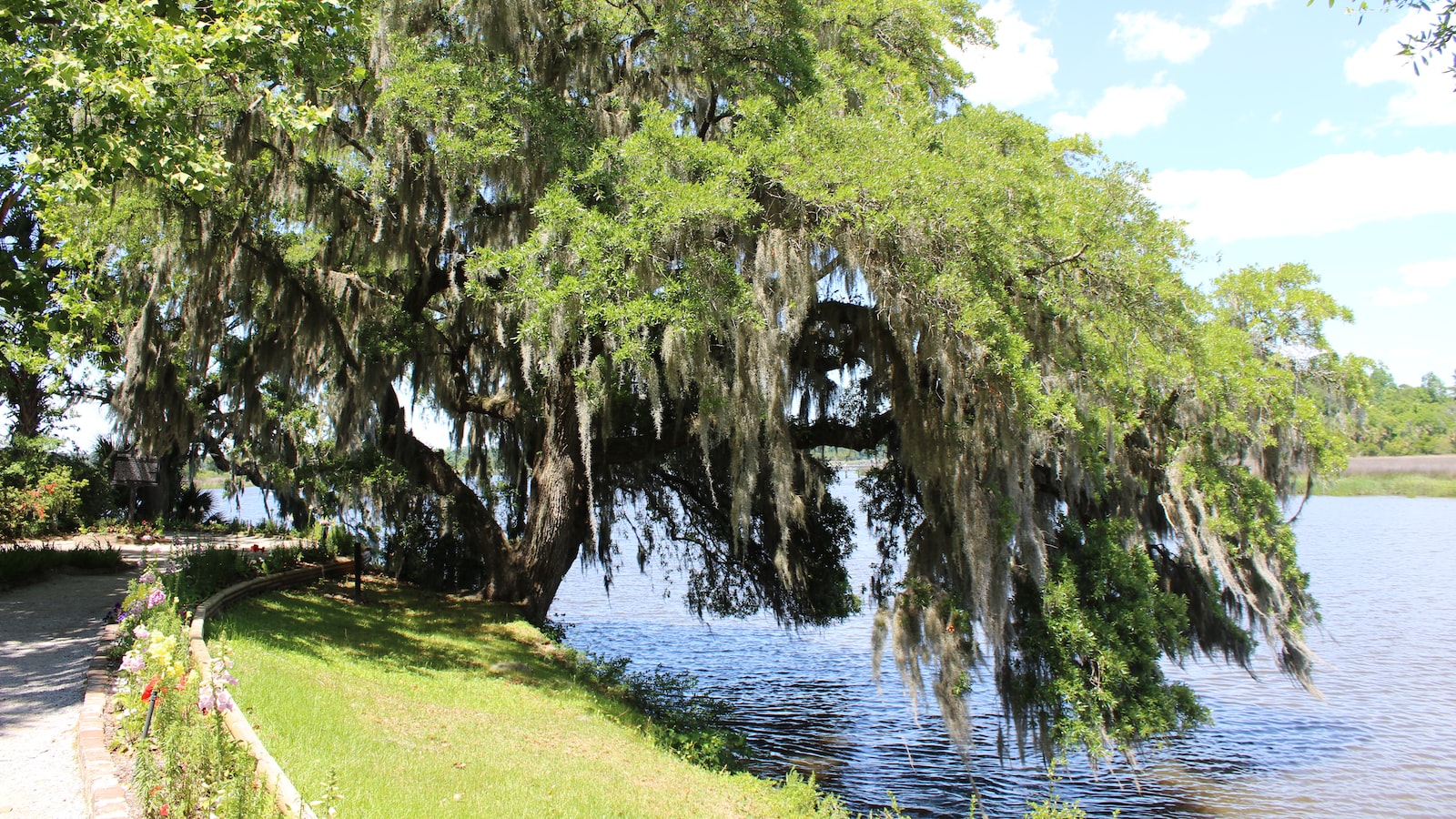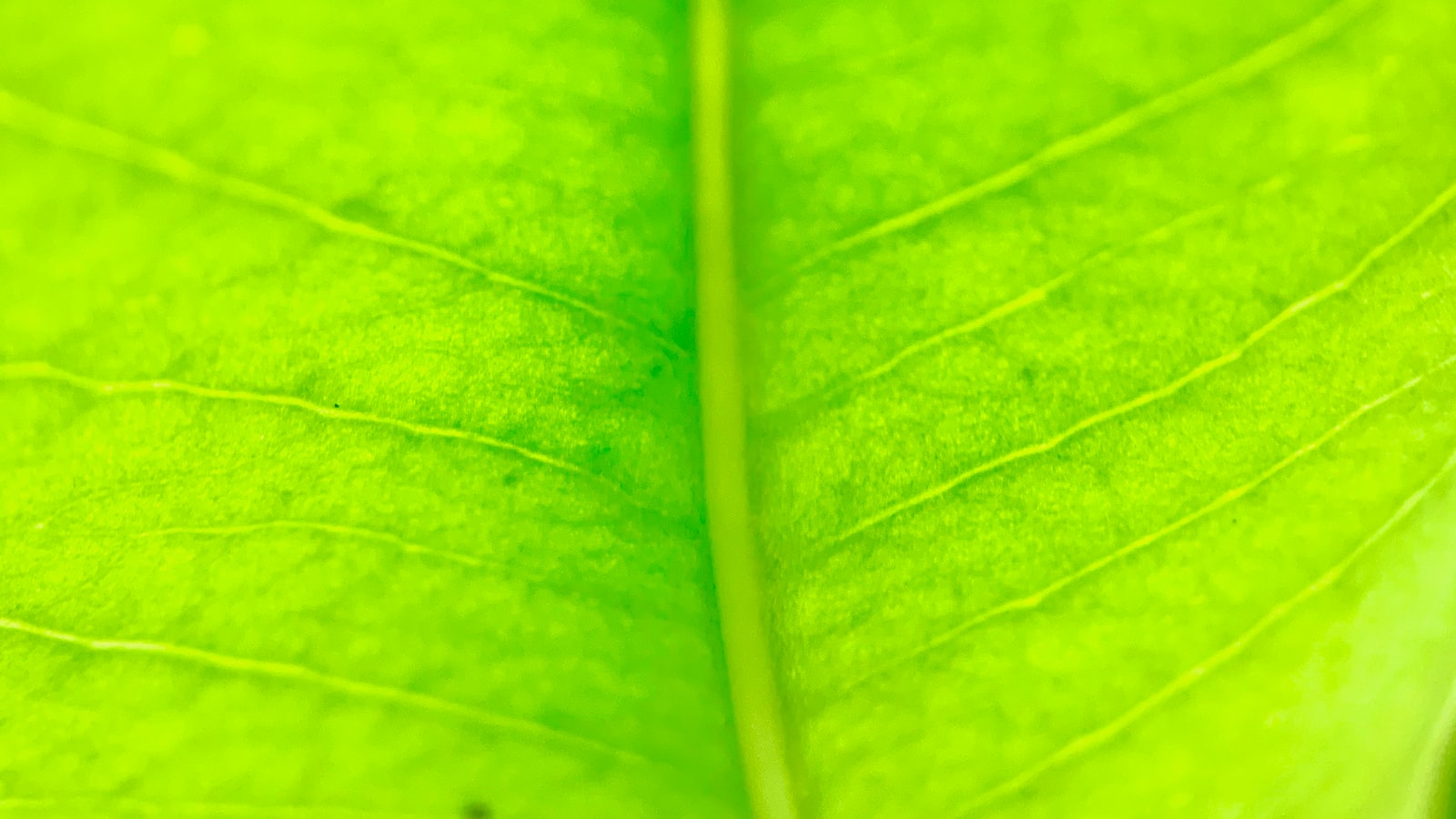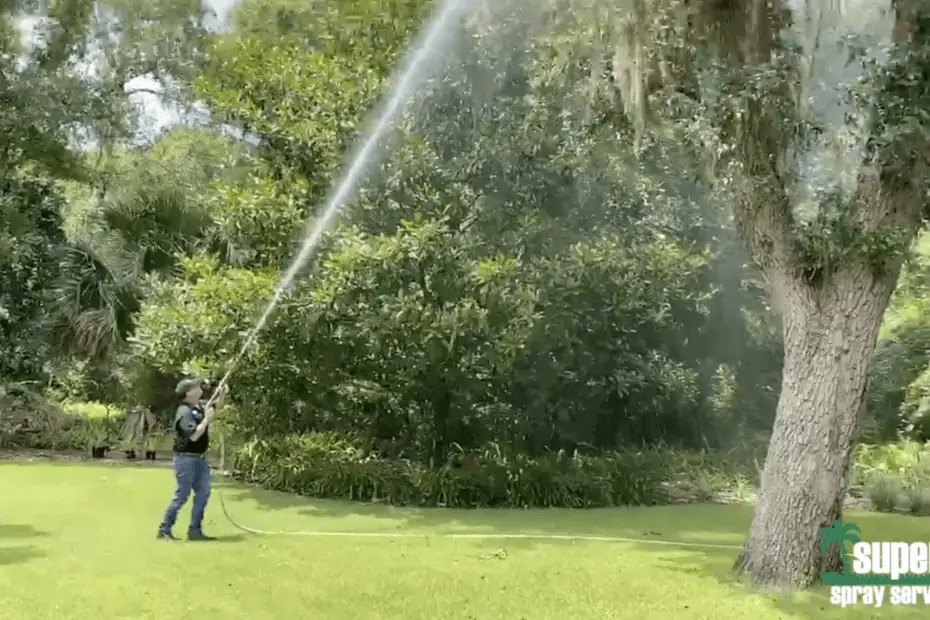Drifting through the air like mystical players of a forgotten symphony, Spanish moss tangles delicately within the canopies of majestic trees. With its ethereal presence and subtle charm, this captivating epiphyte has long captivated our imaginations. Yet, even enchanting beauty can occasionally overstep its bounds, compelling us to seek solutions that restore harmony to our arboreal companions. In this article, we embark on a journey infused with resourcefulness and respect, exploring the art of delicately removing Spanish moss from trees. As we delve into these ancient woods of knowledge, we navigate the delicate dance between preservation and pragmatism, preserving the ethereal allure of our treasured trees while maintaining their well-being. Join us as we unravel the secrets that lie within this verdant tapestry, with a firm resolve to protect nature’s balance.
Unveiling the Intricacies: Understanding Spanish Moss and its Impact on Trees
Spanish moss, with its ethereal beauty and mysterious presence, is often found gracefully draping itself from tree branches, conjuring images of enchanted Southern landscapes. However, this delicate epiphyte, despite its mesmerizing appearance, can have a detrimental impact on its host trees if left unchecked. In this post, we will delve into the intricacies of Spanish moss, exploring its symbiotic relationship with trees, potential harm it can cause, and finally, some effective methods to safely remove it.
Spanish moss, scientifically known as Tillandsia usneoides, is not actually a moss but rather an air plant belonging to the bromeliad family. It thrives in warm and humid environments, primarily in the southeastern United States and parts of Central and South America. This fascinating plant relies on trees for support and nutritional needs, rather than deriving sustenance from the tree itself. While Spanish moss does not directly harm its host, it can become problematic if its growth becomes excessive, hindering adequate sunlight exposure and air circulation for the tree’s leaves and branches.
| Features | Tips |
|---|---|
| Soft, silver-gray strands that cascade from tree limbs | Regularly inspect trees for signs of excessive moss growth |
| Serves as a habitat for various insects, birds, and tree-dwelling creatures | Prune dead or dying branches to reduce suitable nesting sites for critters |
| Does not harm the host tree but can impede sunlight exposure and air circulation | Remove excessive moss to prevent potential damage |

Masterful Techniques: Step-by-Step Guide to Safely Remove Spanish Moss from Trees
Spanish moss can often lend a touch of charm and mystery to trees in warm southern regions, but when it starts to overtake your beloved trees, it’s time to take action. With our step-by-step guide, you can safely and effectively remove Spanish moss without causing harm to the trees themselves.
Before you get started, gather your tools: a ladder, safety goggles, gloves, and a long-handled pruning shear. Begin by inspecting the affected trees and identifying the branches or areas with the heaviest moss growth. Start at the top of the tree and work your way down, carefully removing the Spanish moss from the branches. It’s important to wear safety goggles and gloves throughout this process to protect yourself from any debris or potential irritants. Be sure to discard the moss away from the tree to prevent any re-infestation. Once you have finished removing the moss, it’s critical to dispose of it properly to prevent spreading spores to other areas. Remember to never compost Spanish moss as it can contaminate your compost pile. By following our simple guide, you can safely restore your trees’ natural beauty while ensuring their continued health and vitality.
Features or Tips:
| |
| |
| |
| |
| |
| |<br/><img class="kimage_class" src="https://up-gardening.com/wp-content/uploads/2023/10/photo-1444312645910-ffa973656eba.jpg6523157563925.jpg" alt="Preserving Arboreal Health: Best Practices to Minimize Damage while Removing Spanish Moss"><br/><h2 id="preserving-arboreal-health-best-practices-to-minimize-damage-while-removing-spanish-moss">Preserving Arboreal Health: Best Practices to Minimize Damage while Removing Spanish Moss</h2><span style="color:blue;"><strong></strong></span>If you’re confronted with the task of removing Spanish moss from trees, it’s crucial to follow proper techniques to minimize any potential harm to the arboreal organism. Spanish moss, Tillandsia usneoides, can be found dangling from branches, embracing the beauty of trees with its ethereal presence. However, when it starts to overtake a tree, it can impede the tree’s access to sunlight and nutrients while also increasing the risk of disease and pest infestations. To strike a balance between eradicating this grey, ghostly organism and protecting the health of the trees, consider the following best practices.
1. Manual Removal: Begin by manually removing as much Spanish moss as possible without causing damage to the tree. Carefully untangle it from branches using your hands or a long pole with a hook-like attachment. This method should be your primary course of action, especially if the infestation is not too severe.
2. Pruning Techniques: If the infestation has become more extensive, pruning the affected branches may be necessary. Before proceeding, ensure you have the right tools, such as sharp pruning shears or a pruning saw. Remember to follow proper pruning techniques, such as making clean cuts just outside the branch collar, to minimize potential damage to the tree.
| Features | Tips |
|---|---|
| Protective Measures | Wear gloves, protective eyewear, and a face mask when handling Spanish moss to protect yourself from allergens and irritants. |
| Disposal Considerations | After removal, thoroughly check and clear the moss from the surrounding area, as it can still contain viable seeds or insects. |
| Regular Inspections | Regularly inspect your trees to catch Spanish moss infestations early and address them promptly. |
By following these best practices, you can effectively remove Spanish moss while also preserving the health of the tree. Remember, the goal is to strike a balance that allows the tree to thrive while maintaining the enchanting presence of Spanish moss in a controlled manner.
Green Alternatives: Natural Methods to Prevent and Eliminate Spanish Moss Growth on Trees
Spanish moss, a common epiphyte that can be found hanging from the branches of trees, might be a beautiful addition to the scenery, but it can often pose a threat to the health and growth of the trees it attaches to. Luckily, there are several natural methods you can implement to prevent and eliminate Spanish moss growth, without the need for harmful chemicals or pesticides. By opting for these green alternatives, you can protect the environment while keeping your trees in top-notch condition.
| Features | Tips |
|---|---|
| Pruning | – Regularly trim branches to improve air circulation and reduce moss growth. |
| Increasing sunlight | – Trim surrounding vegetation to allow more sunlight, creating unfavorable conditions for moss. |
| Physical removal | – Gently handpick the moss, ensure you’re wearing protective gloves to avoid potential skin irritation. |
Another eco-friendly approach you can take is to introduce natural predators of Spanish moss, such as certain species of beneficial insects or birds, which can help keep the moss population in check. Additionally, spraying a mixture of equal parts vinegar and water directly onto the areas affected by Spanish moss can act as a deterrent, as moss typically dislikes acidic environments. However, remember to always test the vinegar mixture on a small, inconspicuous area first to ensure it doesn’t harm your tree.
Frequently Asked Questions
Q: What does a tree say when it’s tired of Spanish moss hogging the spotlight?
A: “Adiós, Spanish moss! How can I give my branches a much-needed makeover?”
Q: How can I bid farewell to Spanish moss without hurting my beloved tree?
A: Fear not, nature enthusiast! We’ll share a gentle technique to give your tree the freedom it deserves.
Q: Is there a secret ingredient to effectively part ways with Spanish moss forever?
A: Unveiling our tree-saving secret: a simple concoction that will banish Spanish moss while keeping your tree healthy and happy. Stay tuned! As we bid farewell to the tangled tendrils of Spanish moss hanging from the branches, let us part ways with a feeling of triumph and reverence for nature. By journeying through the ins and outs of moss extraction, we have not only restored our trees to their former glory but also uncovered a deeper understanding of the delicate balance between flora and fauna.
Let this final note be a mystical whisper, a gentle reminder of our harmonious coexistence with these ethereal arboreal beings. As we delicately pluck each hardened strand, the trees exhale a sigh of relief, and a bond is forged between nature and humanity.
In our quest to unveil the secrets of the Spanish moss, we have debunked myths and embraced knowledge. Armed with this newfound wisdom, we tread lightly through the mossy canopies, respecting the tapestry of life that resides within these living sculptures.
The dance between sunlight and shadow, earth and sky, calls upon us to be custodians of the natural world. As we remove the Spanish moss, let us not forget the responsibility that befalls us. To nurture and protect, to preserve the delicate equilibrium of our ecosystems, is a duty we hold close to our hearts.
And so, my fellow companions of the tree-whispering art, we now bid farewell to the captivating Spanish moss. But remember, this finale is not an end, but rather the beginning of a flourishing union between us and the magnificent guardians of the forest.
Venture forth with an enlightened gaze, ever vigilant to the presence of the moss, ready to lend a helping hand when needed. May our trees stand tall, unburdened by this graceful yet parasitic visitor, as we revel in the eternal beauty of the intertwined relationship between nature and humanity.
- When to Put Weed and Feed on Lawn in Michigan - October 16, 2023
- When to Fertilize Potatoes Plants - October 16, 2023
- Can You Plant Clover in the Spring - October 16, 2023

